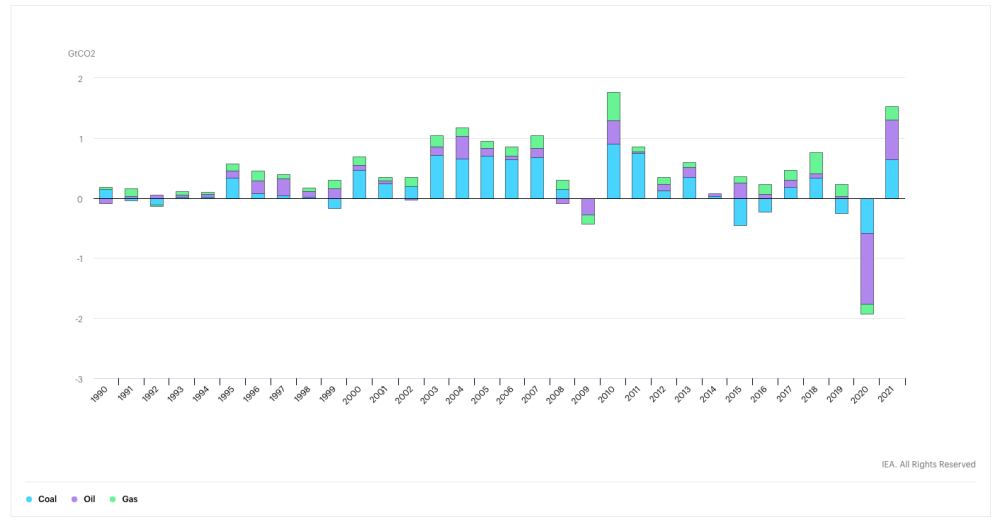
The expected rise in coal use dwarves that of renewables by almost 60%, despite accelerating demand for solar, wind and hydro power. (Source: Shutterstock.com)
Global CO₂ emissions from energy are seen rising nearly 5% this year, suggesting the economic rebound from COVID-19 could be “anything but sustainable” for the climate, the International Energy Agency (IEA) said on April 20.
The IEA’s Global Energy Review 2021 predicted CO₂ emissions would rise to 33 billion tonnes this year, up 1.5 billion tonnes from 2020 levels in the largest single increase in more than a decade.
“This is a dire warning that the economic recovery from the COVID crisis is currently anything but sustainable for our climate,” IEA Executive Director Fatih Birol said.
This year’s rise will likely be driven by a resurgence in coal use in the power sector, Birol added, which the report forecast to be particularly strong in Asia.
It should also put pressure on governments to act on climate change. U.S. President Joe Biden will hold a virtual summit for dozens of world leaders this week to discuss the issue ahead of global talks in Scotland later this year. Last year, when power use dropped due to the COVID-19 pandemic, energy-related CO₂ emissions fell by 5.8% to 31.5 billion tonnes, after peaking in 2019 at 33.4 billion tonnes.

The IEA’s annual review analyzed the latest national data from around the world, economic growth trends and new energy projects that are set to come online.
Global energy demand is set to increase by 4.6% in 2021, led by developing economies, pushing it above 2019 levels, the report said.
Demand for all fossil fuels is on course to grow in 2021, with both coal and gas set to rise above 2019 levels.
The expected rise in coal use dwarves that of renewables by almost 60%, despite accelerating demand for solar, wind and hydro power. More than 80% of the projected growth in coal demand in 2021 is set to come from Asia, led by China.
Coal use in the U.S. and the EU is also on course to increase but will remain well below pre-crisis levels, the IEA said.
Recommended Reading
US Drillers Add Oil, Gas Rigs for First Time in Five Weeks
2024-04-19 - The oil and gas rig count, an early indicator of future output, rose by two to 619 in the week to April 19.
Strike Energy Updates 3D Seismic Acquisition in Perth Basin
2024-04-19 - Strike Energy completed its 3D seismic acquisition of Ocean Hill on schedule and under budget, the company said.
Santos’ Pikka Phase 1 in Alaska to Deliver First Oil by 2026
2024-04-18 - Australia's Santos expects first oil to flow from the 80,000 bbl/d Pikka Phase 1 project in Alaska by 2026, diversifying Santos' portfolio and reducing geographic concentration risk.
Iraq to Seek Bids for Oil, Gas Contracts April 27
2024-04-18 - Iraq will auction 30 new oil and gas projects in two licensing rounds distributed across the country.
Vår Energi Hits Oil with Ringhorne North
2024-04-17 - Vår Energi’s North Sea discovery de-risks drilling prospects in the area and could be tied back to Balder area infrastructure.



